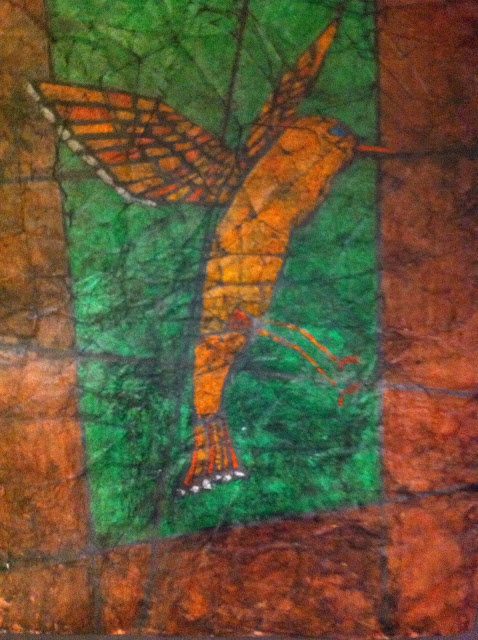"And since geometry is the right foundation of all painting, I
have decided to teach its rudiments and principles to all
youngsters eager for art...
Albrecht Durer May 21, 1471
A busy day today, what with demonstrating the process of staining and glazing our clay pendants, working with students finishing up their crayon/india inks stain glass projects, and getting everyone started on their positive/negative projects using the animal silhouettes and india ink. It also included some interesting and mildly "humorous" situations dealing with student behavior.
I'm a stickler for students paying strict attention when I am demonstrating a process. When a student chooses to behave in a manner which distracts me or other students, I always ask that they stop what they are doing, even though it may seem minor in any other circumstance. This morning during a class period, two of my students sitting right in front of me were fanning themselves with their folders. I asked them to stop..they refused..again..refusal..asked them to leave the room...refused. My patience at an end, I went to the hall and summoned the vice principal assigned to our building. He came to my room and immediately noticed that the "leader" of this little rebellion was totally out of dress code, wearing jeans and also did not have his id badge.. The student was sent to in house suspension for those violations.
The humor in all this is that this is the last week of the school year. I was about to show the students a very unique process no other art teacher in this school would have taken the time to show them. Here was a student, who got up this morning and decided he was going to dress against dress code, come into my room late, and behave in a manner that was guaranteed to draw my attention...then be belligerent enough to get me to call the authorities and draw their attention as well. Maybe it's just me, but I thought it was funny.
Ok, then I am posting some pics of some of the pendants the students finished today. Hope you enjoy them.





































